What makes suffering attractive?
Rapha was founded in 2004, but the journey started long before that, in the problem solving mind of Simon Mottram. We visited Simon at the Rapha headquarters in London to talk about how Rapha became the giant of today’s cycling culture. This is the conversation.
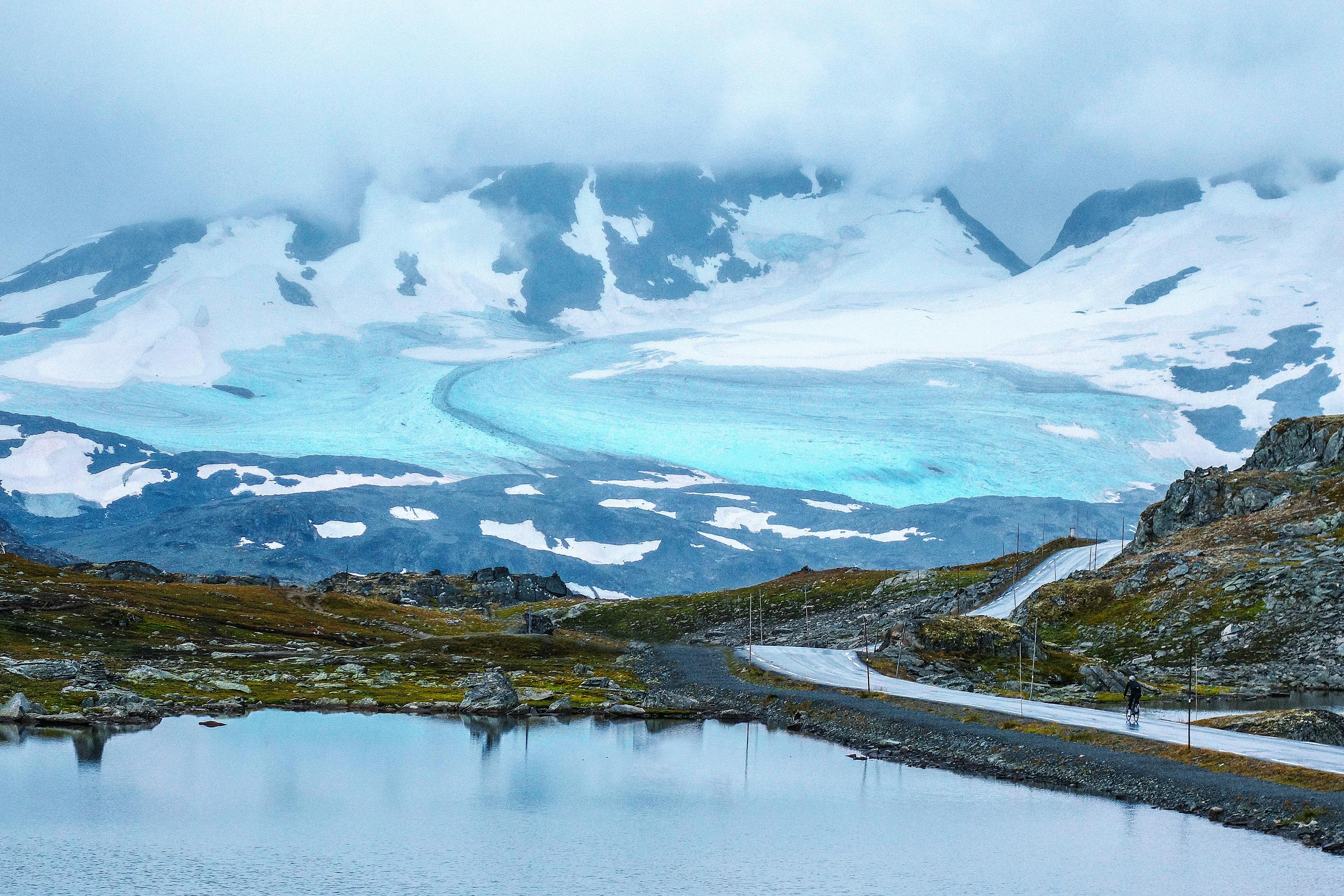
Text: Mari Oshaug
Ride photos: Marius Nilsen
Photos: Rapha
SM: To understand Rapha, that Milan story (about the gap between the old and new generation in cycling culture) is quite interesting. There is this old conservative tradition and then there are these new kind of hipster people who come from skateboarding, BMX or something completely different. I always felt like Rapha should sit right in the middle of that. We should not be at either end because cycling is too good and too amazing of a sport to just be left in a corner.
On the other hand we did not want to forget the history, because there is so much beauty and drama in it.
BV: And craft…
SM: Yes, exactly. Beautiful things and amazing people. We want to bring the craft up to date. Although our first range of cloths was called Fixed, because we were all riding fixies, we now try to balance between the two, tradition and modern.
BV: There are other companies trying to do what Rapha is doing, but you really were the first one out?
SM: There are companies taking what we do as a sort of wrapping. “Inspired by” I suppose, which is fine. When people stop copying you it means you’re not doing anything interesting. But they really should focus on doing things their own way.
When we started Rapha, it wasn’t just about making stuff that looks good or to tell nice stories. It was to solve problems and to make better products, and I think my issue with copycats is that they are not really making better products, they are just playing off what exists. That’s not helping the sport or moving the industry forward, and I think it’s boring.
Cycling is too hard to just put up with crappy polyester jerseys and bib shorts with a basic pad – saying that is all you need. Well, that is all you need, but wouldn’t it be better if you had something that helps your performance and comfort? I think so.
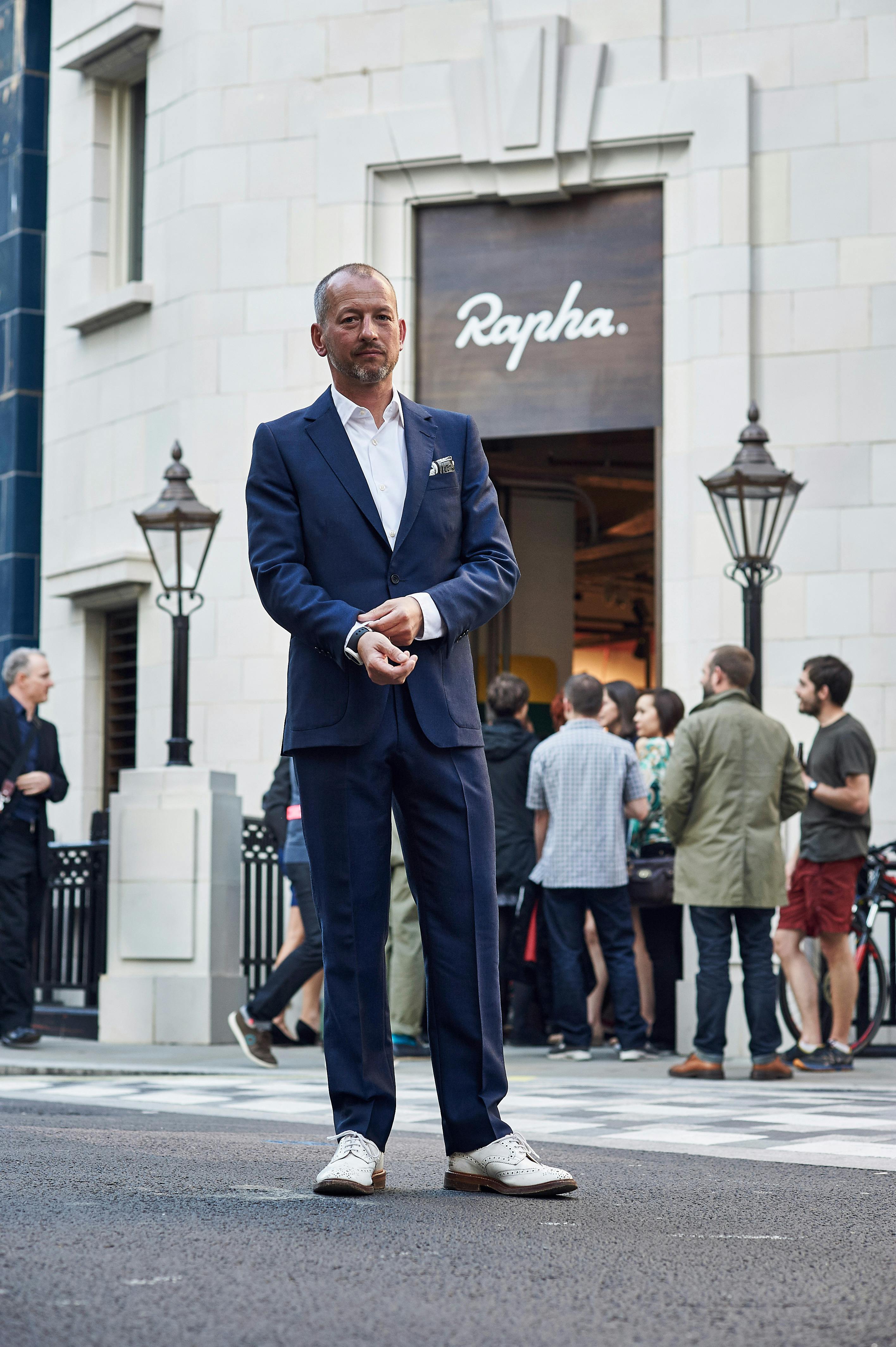
BV: You founded Rapha in London in 2004. Lets take it back - how did it all start?
SM: The story goes back another five or six years before then, when I was just a bike rider. Back then cycling was very underground in London and there were not many people riding on an everyday basis. But I still rode every day and I loved the sport. I grew up watching racing, wanting to absorb it all, which back in the old days was quite hard to do. There was no internet and content you could easily find through Google. You had to go out to a book store or buy French newspapers. But I loved all that and I spent twenty years of my life falling in love with the sport.
I was riding a lot, but I was frustrated with bad products and also the way the sport was portrayed. It was all low quality, bad execution, bad art direction and you’re forced to compromise as a rider. You could have stuff that worked but made you feel awful and looked terrible and it didn’t get to the heart of why cycling was so appealing. That is stupid because cycling is too nice of a sport and you should not have to compromise.
So that was my existence living in London. Riding every day, riding on weekends and riding abroad whenever I could, thinking why hasn’t this sport done a better job for it self? You have other sports like surfing, skiing and even golf that have done a much better job on becoming appealing.
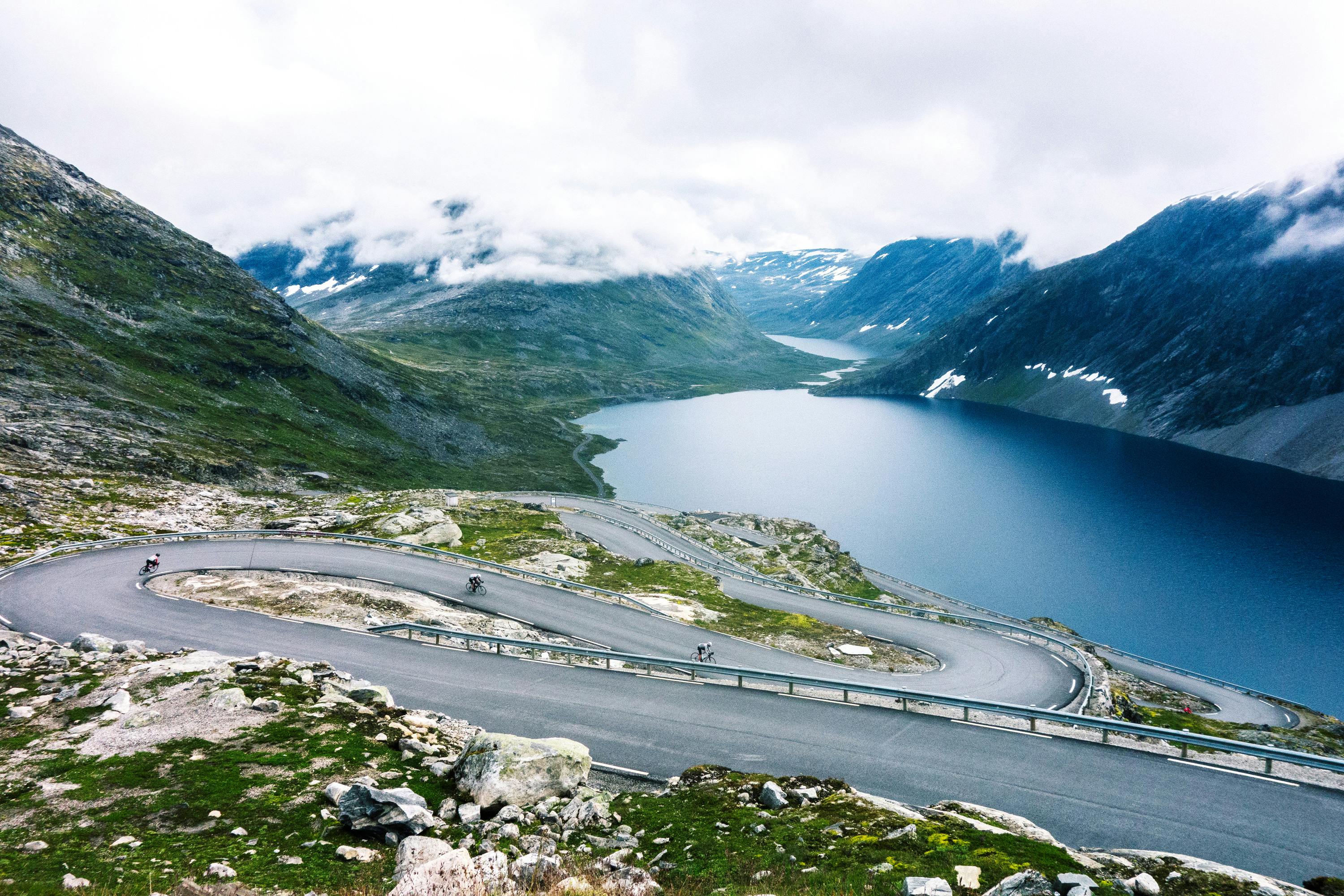
I think cycling is such an impressive sport and it has so many different dimensions. Whether it’s travel or adventure, culture or the social community side, the history and all the fitness, performance and the day to day mobility. It has got everything. And yet, if you’re a cyclist you are seen as being a bit weird or odd, and parts of me like being odd, but it frustrated me that we were defined as being irrelevant. So I just became obsessed by this problem and that there surely was a better way of doing this.
Working with consulting brands for a long time I was getting to the stage were I wanted to do my own thing. I found myself creating stuff on the kitchen table, talking to journalists and clothing manufacturers, and I was doing it all without really thinking about it. It became an obsession. I spent a lot of time traveling trying to find someone who had cracked this code. Like the Japanese, surely they found a way? So I went to Japan, but there were no good bike shops, and it was all the same in the US. Why has nobody got this?
What I realized was that the way of doing this was to focus on the personal, human side of the sport, because all the other cycling brands were focusing on technology. It was all about speed and weight, but for me it was never about that. I wanted to be faster but I was not defined by how fast I was, it was all about the personal experience. And that’s what I think was the most amazing…sorry I’m just gonna ramble on (laughs)… the most amazing thing about this sport. It is a total transformational and fulfilling experience if you push yourself, it’s amazing. For me that’s why I ride a bike. It could be riding in the park or up a mountain, it doesn’t matter. You get a development as a human being because you push your body and your mind and that’s a great platform to built a brand on – the core experience of what cycling really is, not just about technology.
But the products on the other hand should be high performance, high style and way better than anybody has ever expected. As a result of that, more expensive as well, but people would value it. Those two things combined, personal experience and high quality products, describes what Rapha is.
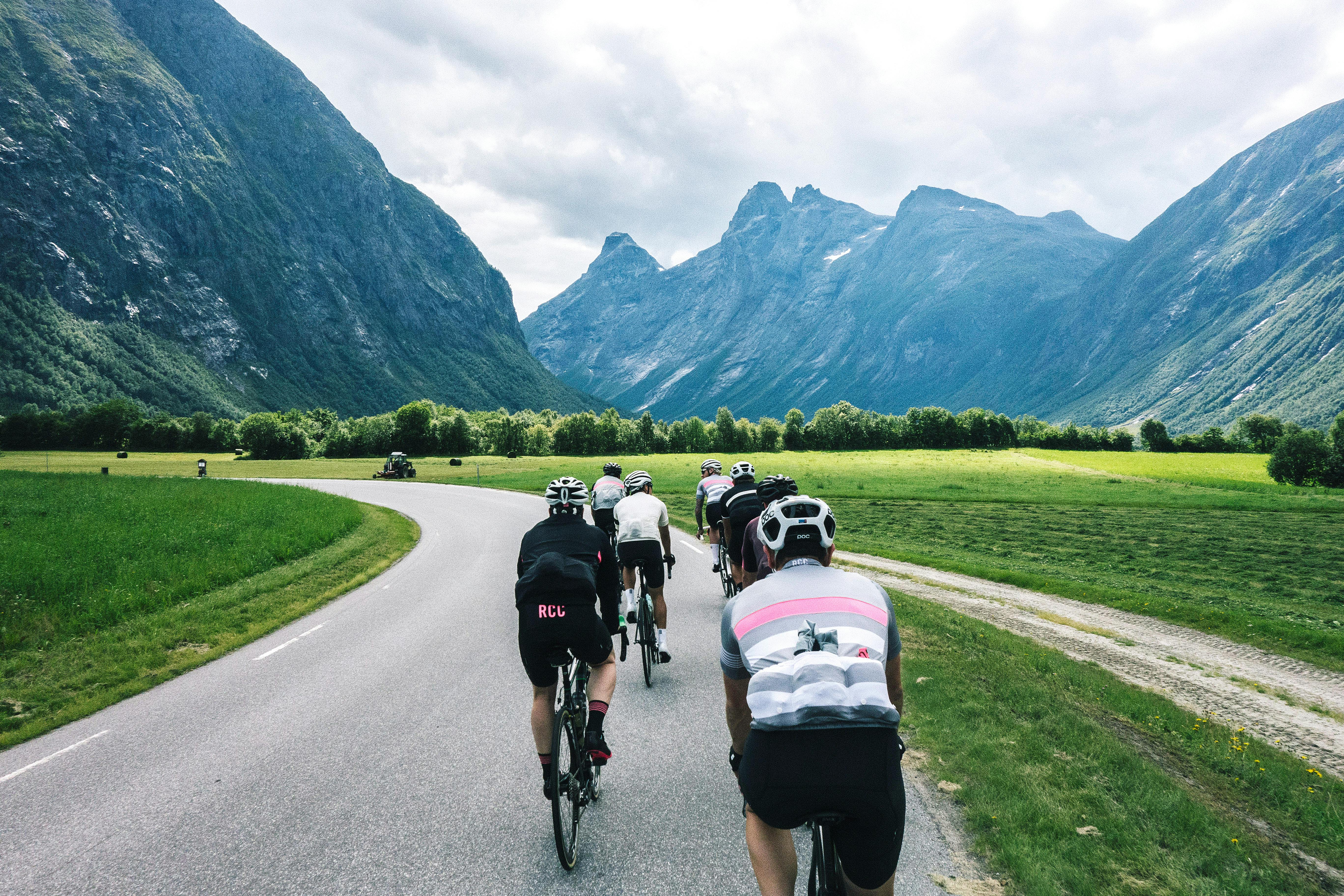
BV: So you started Rapha with just a handful of people. How was the progress from that point until where you are today?
SM: When we did our fifth birthday we did these panels, one for each year, and it had number of employees, number of orders, number of products, km ridden and mountains climbed. And now we do that every year. It’s quite a nice marker on how we’ve grown. Our first year was tiny. There were three of us, Luke, Claire and myself. Those early years were brilliant because the industry was at a standstill, so we were on our own in this great white space, and it was up to us to define everything. It was brilliant to be able to focus on every single detail of what we were doing. The return policy, the copy on the web site, the packaging, the events or the products themselfes. We were working every single detail. BV: That leads us on to the next question. Talk about how to “not following the rules of the industry”?
SM: One of the fortunate things for me was that I did not come from the sport, but I knew a lot about it because I’de become obsessed about it for twenty years. So I knew more then most customers, but I was like most customers in terms of my cycling. I knew what some people would find interesting and the way I interact with a jersey is probably different then to a x-pro cyclist. There’s a different experience when you are an enthusiastic amateur, all the details matter. Like having a chin guard on your jacket, for days when you don’t shave and a zipper that doesn’t rattle, because I hated the sound of it. That was really important to me and all of our first jerseys had that, which no one did at that time.
It is your perfect moment when you’re riding a bike, it is total pleasure… and pain at the same time, so everything matters. We had the freedom to think about everything from the point of view of the customer. But then I could wrap it up and connect it to the sport and the history. That was quite useful and we desperately keep to that external view.
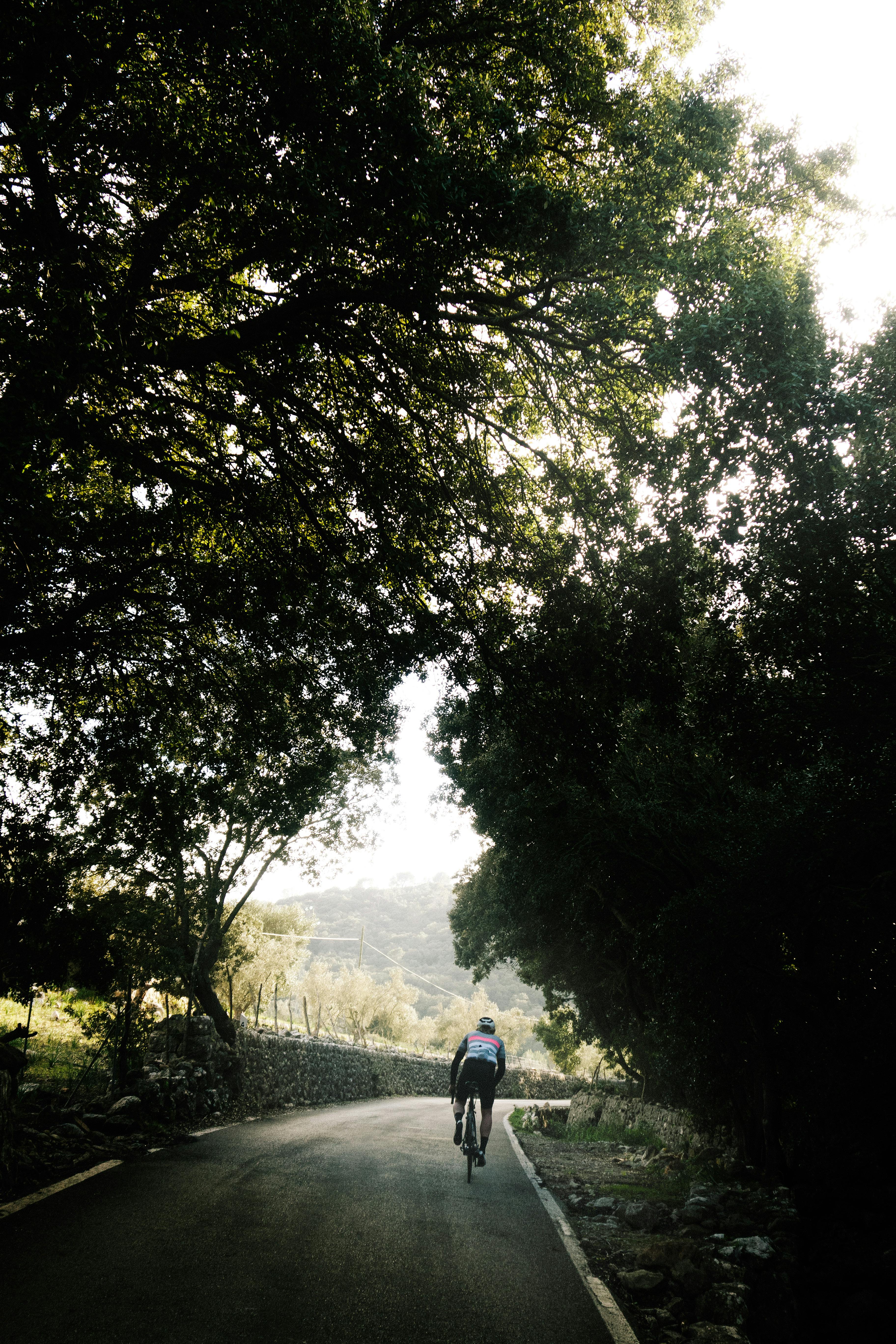
Even though the industry has grown, it is still run by the same kind of companies. It’s still very old fashioned. Whether it’s the brand owner, the distributor or the retailer, most of them are ex-pros, they have been around for a long time and they think they know what the customers want. My view is that none of that makes sense. I don’t want to sell Rapha through distribution where somebody else talks to the customer. Let’s go direct and let’s create products that we want.
We were told that people would never spend money on cycling gear and that people would never buy stuff with pink on it. There are so many things we were told not to do, but we did, because we liked it and we felt that there would be a few other people that would like it as well. So we just did it all our own way and we had this amazing white space to do it in. To grab the history of the sport and say: Hey, look, this is amazing.
We never wanted to go to an agency because we didn’t want anyone to tell us what to do. So we started an in-house agency. It’s good to have control, but it gets more difficult as the company grows. Then it becomes all about culture and hopefully you feel it when you’re here. I spend most of my time on making sure all of the staff and people involved with Rapha, get the passion of the sport.
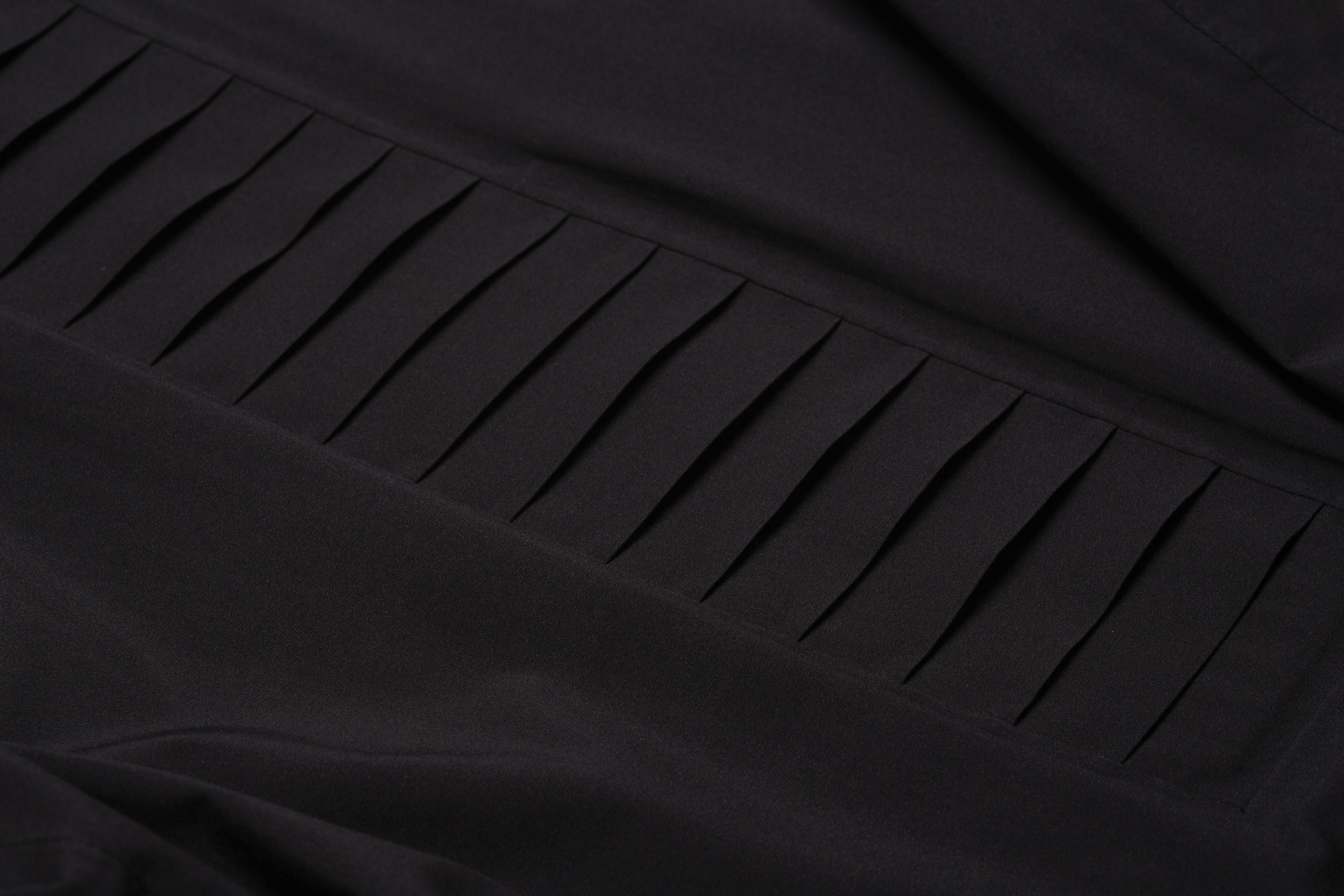
BV: The name Rapha came from the 60’s cycling team, but why did you decide on that exact name?
SM: I used to do brand naming for a living and it is quite difficult to find a name that is protectable, unique, relevant and pronounceable in twenty languages. The norm is to never take an existing name, make something up. Off course when I was building my own brand, I threw that out the window. I wanted a name that felt like the sport and I came across the word Rapha. It felt appropriate. To me personally cycling is the southern Europe, it’s the great races, it’s intense, the heat and the smell, the color of the peloton…
BV: Something so simple but at the same time so emotionally strong.
SM: Exactly! For me, the word Rapha sums it all up. The fact that it came from a team or a drink from the old days, is nice to have. It was not best practice, but it ended up being quite a good name.
BV: What does it mean to honor the sport of road racing?
SM: To honor it you have to promote it, cherish it and treat it with respect. It’s a base level thing for me personally. From a product point of view, honoring the sport means not compromising. Not on performance and not on style. Our way of honoring the sport is by constantly pushing it forwards. What that means for us is also to celebrate it and get more people on the same journey as us. My favorite moment is when somebody says, “I bought a road bike and I’m just getting into it”. They’ve got so many amazing rides ahead and you can ride for the rest of your life. That’s what honor is about, get more people to go on that jersey and open new doors for them. BV: Why did you choose the color pink?
SM: Everything had to be black when we started. Partly because I knew a few people in the bike messenger community and they were the cool guys who did 70-80 miles a day on a bike around London, dicing with death and covered in shit. They always wore black because it was practical and you didn’t have to wash it all the time. And I loved all of that.
Secondly, the sport was covered in colors. Bright red, yellow, blue and we wanted to get away from that. But it could not be just black. We had to find some details to set it apart. So pink came obviously from the Giro de Italia and Gazzetta. But it was more than that. It came from Paul Smith who used a lot of pink in the 90s. Before he did the colored stripe, he used to have a pink logo on a dark grey shopping bag, and I had those at home over the years and it was always in my mind that pink, black and dark grey would look nice together. So that’s way we chose the pink color. A lot of people hated it. Just a tiny bit of pink and they could not buy it. But it never worried me that some people didn’t like it, because I know that people who got it would be all in. If you try to make something perfect for everybody, it will appeal to nobody.

BV: Let’s get more into the fashion part. What is it about cycling and fashion?
SM: There were two or three moments in my life where I remember cycling getting fashionable. I remember some clubs in the 80s, when people started wearing cycling shorts, which is kind of weird, but it’s a very specific aesthetic. I think cycling in general has a look that appeals to designers, fashion people and architects – the aesthetic kind of people in general. The simplicity of the old cycling gear always appeals and that was very instrumental for us when we started Rapha. We wanted to have these simple forms because it was so different to all the plastic, rubbish clothes that were out at the time. There’s a purity about it and that always makes it interesting.
BV: Tell us about the inspiration from the old knitted jerseys and how they were made.
SM: In the old days they could not do crazy logos or designs because they had to stitch pads or embroider it on. This inspiration was vital to us. I have this old picture of Eddy Merckx and I remember saying this is what we should look like. He’s wearing sports wear, but it’s not super extreme, it’s totally wearable. He just looks cool as f***. He’s got his hand down his shorts, he doesn’t give a shit, he’s a rock star and yet he’s a bike racer. I love the simplicity of it. The clear jacket over a simple logo merino jersey. That’s how I want to look like when I’m on a bike, not like some crazy space man. So key images like this one, really defined how we look today.
There are some things about Rapha that you would not know. The first thing is that our business plan starts of with an essay about suffering. Who does that? But it totally frames the whole experience of what makes suffering attractive.
Another thing you may not know is that before we launched in 2003 I went to the L’Étape du Tour in the Pyrenees. I met this journalist who wrote a piece on middle aged men in lycra and why they were going to L’Étape? She interviewed me about Rapha and the article came out the day before the L’Étape. I bought 50 copies of the news paper, put my business card in it and handed it out to all the cyclists on the plain. Have a read of that! So in terms of obsession I was going for it a long time before we even launched.
BV: What is the ultimate Rapha Experience?
SM: That is day three or four of a randonnée, when you have been riding for a couple of days and you have totally forgotten about everything else in your life. Your phone is switched off. You are somewhere historic or relevant. You’re already tired and at the end of a climb where you can see the top. You’re in this amazing experience with friends and you’ve suffered and given a lot, but you’re gonna make it to the top. If I could put that moment in a bottle and sell it, that would be worth millions. The perfect Rapha moment. That is also why we do Rapha travel, because I just want more people to experience that. BV: What do the ambassadors mean to Rapha?
SM: Everything we try to do is about relationships and community. It’s not just selling products, because that’s boring. The world doesn’t need loads of products, it needs relationships, experience and real value. And that is what cycling offers. So our approach is to try and have direct relationships with the customers. And you can’t do that through shops or a website. So from day one we hired people to get into the market, meet people, start a community, do events and the ambassadors are an absolute key part of that. They extend the network and help us grow from the inside out.
It’s important to use regular people who are hard core and interesting. You can see a spark in their eyes that you rarely see when working with pros, at least not in the same way. Off course we work with pros like Bradley Wiggins as an example, but really for the reason that he’s an interesting person, not because he’s got a cool reputation. But besides that I’m much more interested in ambassadors than pro racers.
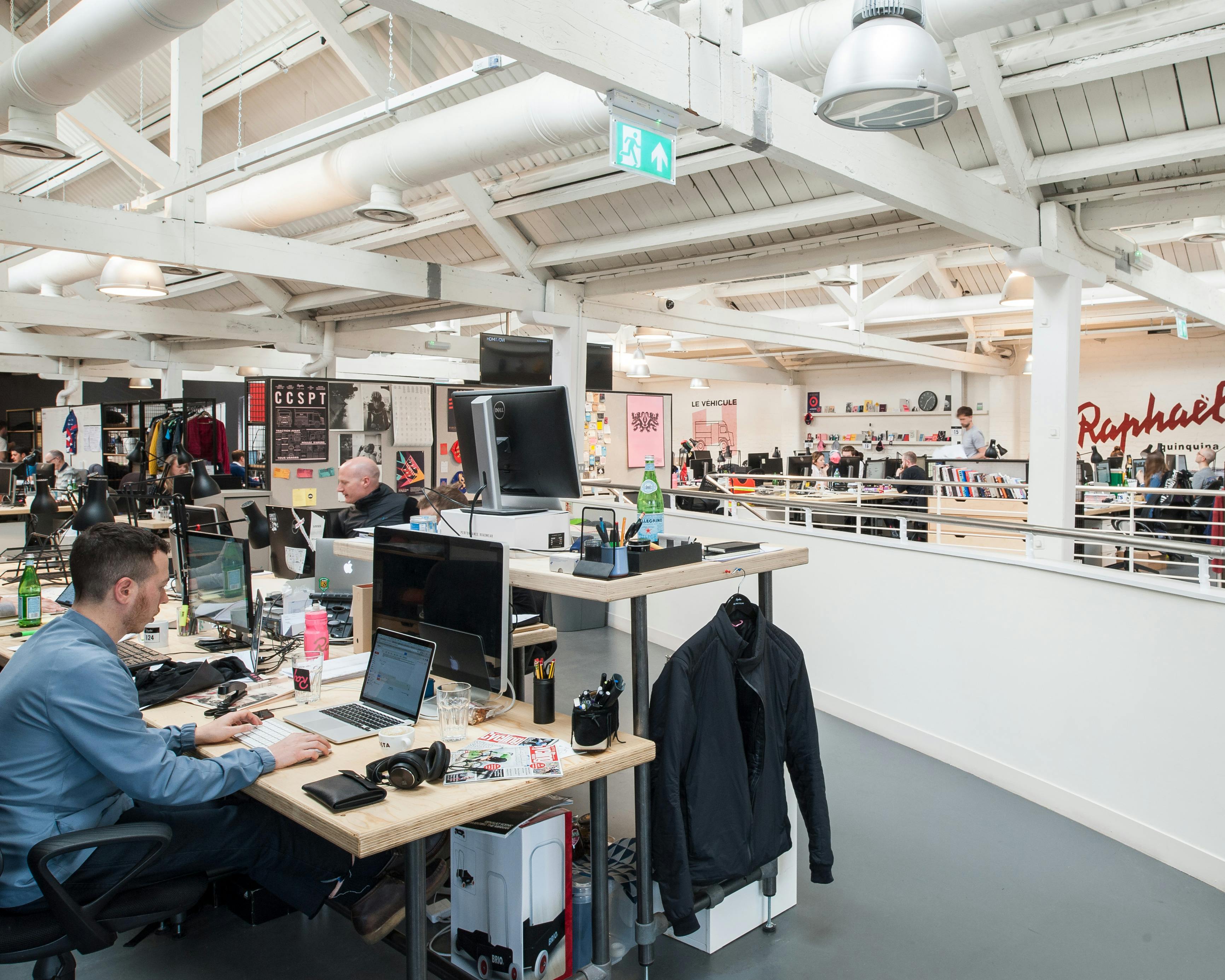
BV: In terms of being a lifestyle brand, who do you look up to?
SM: There was never a perfect role model, but I wish there was, it would make life so much easier. When we were raising money at the start it was really hard. I wanted to be able to say “this is like Patagonia for cycling” but 70% of their sales are through wholesale, so it’s completely different. But we do look up to certain parts of companies. Like Patagonia, they are good at being honest, authentic and sticking to their values. I like that and the fact that they don’t do a lot of advertising. They try to do things the right way.
I also think Nike is amazing at what they do, because they manage to do stuff at such scale, that still has an emotional connection. And they do it again and again. BV: To what or whom do you owe the success of Rapha?
SM: People have this perception of starting a business being really hard and people will not lend you money unless you give them your house or something like that. I never found that at all. Everyone I spoke to were incredibly helpful and wanted it to work. Like Paul Smith who said he would help me in any way he could. So we did products with him and that became really important to the history of Rapha.
For me personally it’s a few people that i’ve worked with in the past that are quite important. One of them was John Muphy who set up Interbrand, where I used to work. He hired smart, young people and gave them huge confidence. You can do anything. From him I got this total confidence that if you really go for it, you can do it. That was so valuable to me.
And my Dad off course.
BV: Do you remember a moment when you thought, “this is going to work!”
SM: Yeah, in 2005 we had been established for a year and were starting to do ok and then the bombing on the tubes in London happened. I remember the day after, because the tubes were closed, so lots of people went on their bikes for the first time. I was riding to work, as I always do and suddenly there were all these people cycling. It made me realize that this sport can be in the mainstream and that felt really good.
The other time was when the Tour de France came to London and there were 3 million people on the road watching the race, which was unbelievable.
There are others as well, I’m sure. Seeing Chris Froome coming up the Mont Ventoux in the yellow shirt and Rapha shorts was pretty cool. BV: How do you feel about that now, when you travel around and see people wearing your clothing?
SM: It’s amazing. I used to take my family down to Richmond park to see if we could spot people wearing Rapha. We would drive around for an hour and not see anybody and then drive back home. While now every third person you see is wearing Rapha and I love it!
BV: What does the future hold for Rapha?
SM: In general, our purpose is to make the sport the most popular sport in the world. Hopefully the future holds that, but that could be 30 or 40 years away. In the meantime there are certain things we have to do. We have to reach more people if we want the sport to be bigger. How we grow that community is really interesting. There are huge parts of the world where Rapha doesn’t exist yet, like South America, The Middle East or China, there are lots of places to grow the community. We also need to take the inspirational side to the next level. We have always been good at content, photography and films. We now got a platform that we can build a proper media business on.
I’m still appalled by how bad most cycling media is. It’s not helping the sport. Together with Soigneur and Rouleur, you’re an exception, but it is not reaching large scale. What most people see when they look at a bookshelf is the same thing as they did in 2003. It’s just horrible. So I would love to get more involved in that and for Rapha to be a channel of content you consume whenever you want, but it’s constantly inspiring. We’re also going to put on more events and show how racing should be done.
BV: Do you have to be a cyclist to get a job at Rapha?
SM: You don’t have to, but you want to and you will become one.